COVID: TRAVEL TROUBLEMAKER
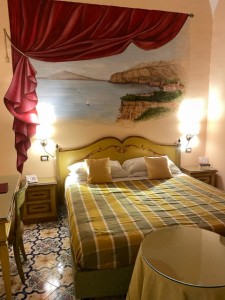
My quarantine was spent here.
“it’s positive.”
With those two words, my plan to return to the United States early the next morning was smashed.

My quarantine was spent here.
“it’s positive.”
With those two words, my plan to return to the United States early the next morning was smashed.
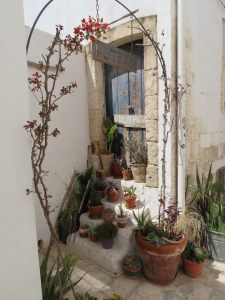
Growing cactus must be one of the reasons there are so many varieties in Southern Italy.
In Part 5, we discovered Lecce Baroque is an attitude as much as an architectural style and that certified organic wines go down easily with a farm-to-table fresh meal wonderfully prepared.
The last city on this two-week Odysseys Unlimited tour of Sicily and Southern Italy came sooner than it seemed possible. That’s the way it is with all vacations, I expect, but sometimes the days melt faster into the next depending on activities and on the group’s personal dynamics. This 18-member group has been exceptionally harmonious, so the shared experiences have flashed by. Nonetheless, we are headed to Sorrento, a city Russ and I visited with Odysseys four years ago. Then we had mere hours in Sorrento, but an unmistakable allure demanded a lengthier stay.

Lecce Baroque styling means artistic flourishes carved in white limestone.
In Part 4, we discovered conical roofs of flat rocks not bound with mortar can be quite useful to thwart a King’s taxman and in today’s market, bring in the big bucks.
what we learned:
Barocco leccese is an ornate artistic style developed in Lecce and in Terra d’Otranto allegedly between the second half of the 16th century and the end of the 17th. It was developed as a thanks to God for protecting Christianity from the Ottomans. Lecce Baroque style leaves no empty spaces. The thinking was that empty space lets in the Devil. The 2,000-year-old city is considered the “Florence of the South” for the breadth of the fanciful designs of human figures, flowers, and animals carved in white limestone materials encouraged by Charles V, King of Spain, instead of the marble used in Naples. In Lecce, elaborate corbels appear under railings. Classical sculptures of women line the sides of doorways. The point of Baroque design is to wow!
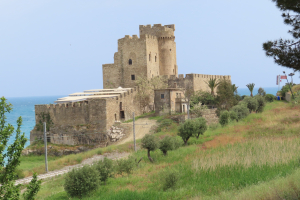
An abandoned castle on the side of the road in Apulia.
In Part 3, we traversed the crooked, uneven narrow roads of Matera’s Sassi area, finding a history steeped in ancient religions, superstitions, and a reluctance even now to live comfortably under the watchful eye of UNESCO and tourism.
Once again, Italy’s unfinished road system causes our bus driver to weave a meandering path along main highways and back roads towards our next destination, the Apulia (or Puglia) region, which forms the heel of Italy’s boot shape. Apulia, which means “land without rain” has a population of about four million. The economy is based on industry and agriculture, with tomatoes the chief moneymaker. Want the best mozzarella and burrata cheeses? Come to Apulia. The region is home to Bari, a port and university town, Lecce (known as the (“Florence of the South”), and Alberobello, home to another type of unique architecture that is a far cry from Matera’s Sassi caves.
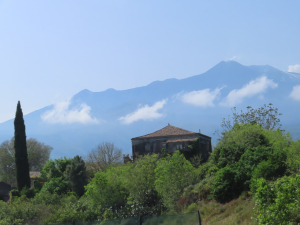
A one € house might be yours.
In Part 2, we explored the historic Valley of the Temples in Agrigento and hiked on Mt. Etna. We also enjoyed sumptuous meals near both those famous landmarks.
We left the island of Sicily for the mainland region of Basilicata, Italy, aboard a 20-minute ferry that docked in Villa San Giovanni, Calabria. Calabria (old Italy) means “place of the bull.” Ninety percent of Calabria is mountainous.
Enroute to Matera, a city of growing fascination the more we learned, we pass by isolated run-down buildings along the road called “one Euro properties.” That’s the price anyone can pay to own one of these crumbling, likely medieval times-built homes. Here’s the backstory. Small villages desperately need restoration of abandoned homes that might entice new residents. However, remaining villagers are likely impoverished and unable to tackle repairs of a second home. Anyone can apply to buy one of those homes for one € with the pledge to restore it to historical accuracy. Applicant must also commit to five – 10 years ownership (depending on the area) but is not required to live there year-round. The property must remain a personal home and cannot be turned into a B&B or other money-making business. Not caring which homes qualified for a one € sale did not stop our 18-member tour group from pointing out luxury homes for the remainder of the two-week trip and yelling out, “One € house.”
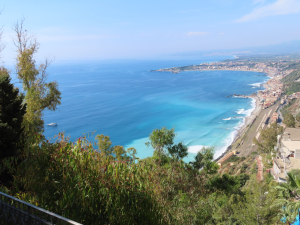
View of the coastline from Parco Florence Trevelyan, the public gardens that began as a private park.
In Part 1, we survived an arduous journey to Taormina for the first leg of our two-week Sicily-Southern Italy tour. We learned about the city’s discovery, its shames (eliminating Jews), and folklore stories woven into today’s culture, from pinecones to pottery heads of planted basil.
what we did:
At the top of the pedestrian-only hill from our hotel, Eurostars Monte Tauro, is the serenely peaceful Parco Florence Trevelyan. The beautiful public gardens were originally created as a private park by Lady Florence Trevelyan Cacciola, a Scottish noblewoman married to the mayor. She styled her sanctuary as a typical English garden with an infusion of colorful varieties of flowers and plants from all over the world, but it was her passion for ornithology (bird watching) that inspired many of the park’s fanciful brick structures. The one most used as a backdrop for photos is called “The Beehives”. Taormina’s government now maintains the quiet manicured respite overlooking Mt. Etna and the coastline.

Looking at Positano as we pass by the bus.
The last time I was in Italy, I did exactly as the 1954 romantic comedy Roman Holiday encouraged. I tossed a coin into Trevi Fountain, assuring my return to Rome. Unfortunately, the movie had the ritual backwards. You stand with your back to the fountain and toss the coin over your right shoulder (where the angels sit), not your left as the movie depicted and which is where Italian Catholics believe the Devil sits. Tossing over your left shoulder might mark your return with misfortune. Maybe that’s why on this trip to Italy

Russ really lost his head over this accordionist!
In Part 5: Mozart brought music to the world, The Sound of Music rang in our heads, and the Eagle’s Nest reminded us of the destruction that greed, hatred, and supreme power can enable.
Munich is the capital of Bavaria. There are roughly one-and-a-half million people living in the city, who proudly have their own nationalistic dialect, and think of themselves as from München Bavaria, not Germany. Munich is known for its beer, Oktoberfest celebrations, museums, and international companies like the headquarters of BMW.
Where we stayed:
Eurostars Book Hotel must have been designed for people like me: readers and/or writers whose imaginations propel their lives. From the first moment we stepped inside Read more
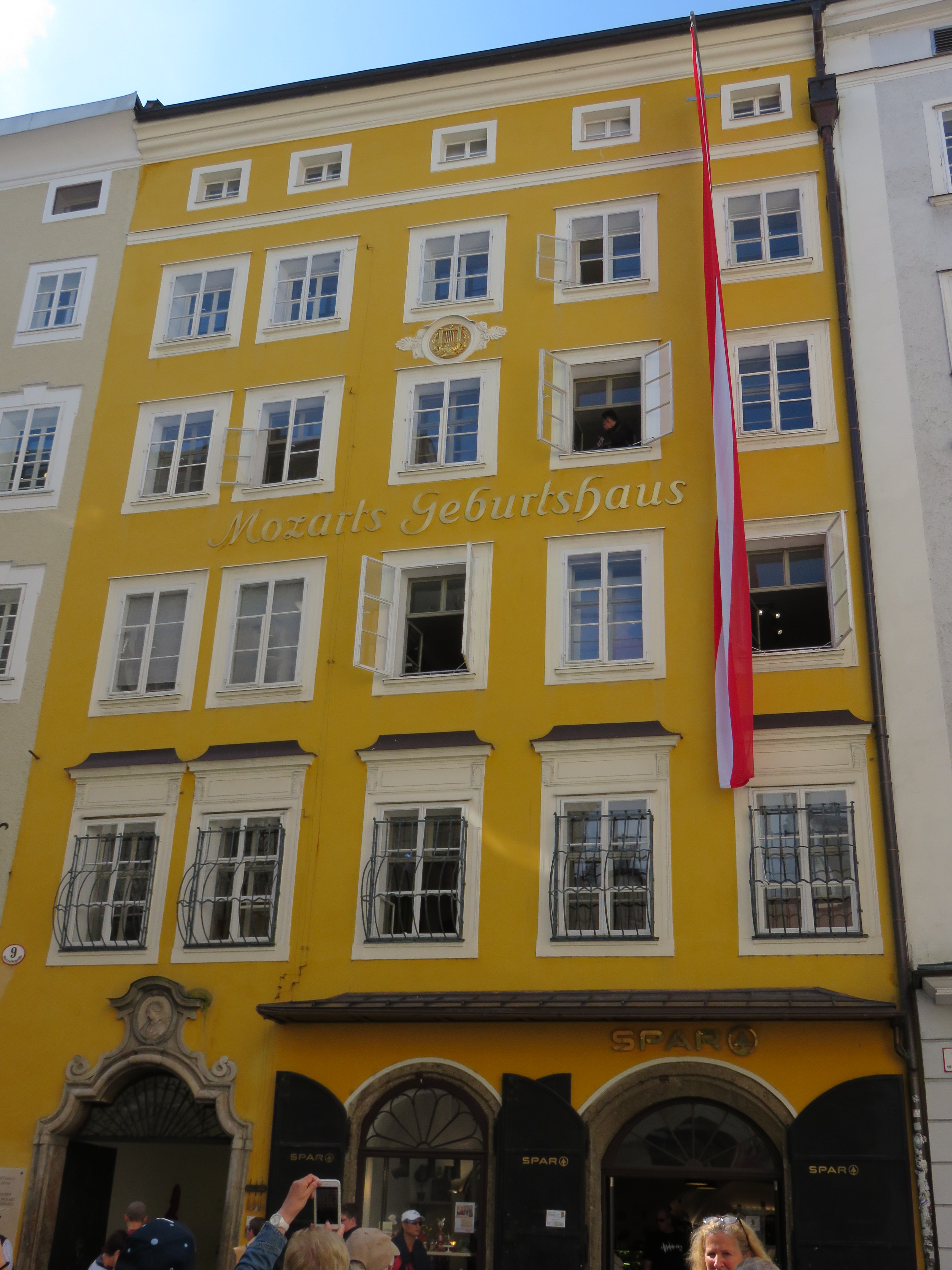
Wolfgang Amadeus Mozart was born here.
In Part 4: Neither the Prince of Liechtenstein or Heidi was around so instead we visited a mountain in Innsbruck and a centuries-old museum of Tyrolean farms.
SALZBURG, AUSTRIA
Where we stayed:
Imlauer Hotel Pitter Salzburg has been owned by the Pitter family since 2007. The hotel was renovated in 2014. It has a beer cellar and Imlauer Sky – Bar & Restaurant rooftop restaurant. The buffet was diverse and carries many regional dishes. Staff was friendly and professional.
What we saw:
One of my grandfathers was from Salzburg (which means salt fortress), so I was Read more
MAIENFELD, SWITZERLAND (OR HEIDILAND TO DEVOTEES!)
In Part 3: A toe dip into Stresa, Italy and a relaxing cruise around Lugano, Switzerland that explored many ancient and diverse communities.
Before leaving Switzerland behind and crossing into Vaduz, the capital of Liechtenstein, we stopped in the border town of Maienfeld, Switzerland. For such a small area, Majenfeld holds two great distinctions of world import.
It’s the birthplace of Heidi, a story written in 1881 by Johanna Spyri. The story may have been a work of fiction, but try telling that to the international tourists who flock here to visit a theme park-like area called Heidiland to see Read more
